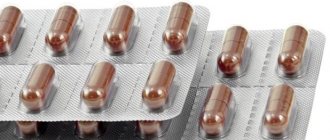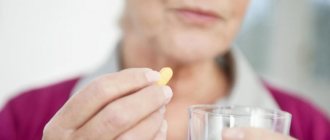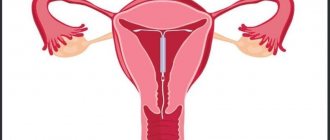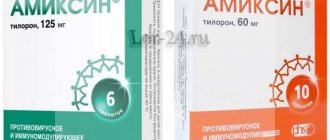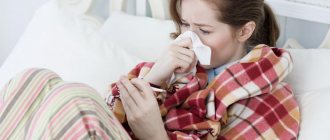| This article lacks links to sources of information. Information must be verifiable, otherwise it may be questioned and deleted. You may edit this article to include links to authoritative sources. This mark was set on February 14, 2020 . |
| Chlorhexidine | |
| Chemical compound | |
| IUPAC | N' , N""' -hexane-1,6-diylbis[ N -(4-chlorophenyl)(imidodicarbonimidic diamide)] |
| Gross formula | C22H30Cl2N10 |
| Molar mass | 505.446 g/mol |
| CAS | 55-56-1 |
| PubChem | 5353524 |
| DrugBank | APRD00545 |
| Classification | |
| ATX | A01AB03, B05CA02, D08AC02, D09AA12, R02AA05, S01AX09, S02AA09, S03AA04 |
| Dosage forms | |
| 0.05% aqueous solution in 100 ml bottles. 0.5% alcohol solution in 100 ml bottles. | |
| Methods of administration | |
| Ointment bases[d][1] | |
| Other names | |
| “Sebidin”, “Amident”, “Hexicon”, “Chlorhexidine bigluconate” | |
| Media files on Wikimedia Commons | |
Chlorhexidine
- a medicinal product, an antiseptic, in finished dosage forms used in the form of bigluconate (Chlorhexidini bigluconas). Chlorhexidine has been successfully used as a topical antiseptic and disinfectant for over 60 years.
Effective against gram-positive and gram-negative bacteria (Treponema spp., Neisseria gonorrhoeoae, Ureaplasma spp., Bacteroides fragilis, Chlamydia spp.), protozoa (Trichomonas vaginalis), viruses[2] and fungi. It affects bacterial spores only at elevated temperatures. It is stable, after treatment of the skin it remains on it in a certain amount sufficient to exhibit a bactericidal effect.
Story
Chlorhexidine was first synthesized in 1947 during the development of antimalarial drugs. The first substance to be marketed was chlorhexidine gluconate, released in 1954 by Imperial Chemical Industries under the brand name "Gibitan", as a treatment for skin and wound surfaces. By 1957, the indications for the drug were expanded, and it began to be used in ophthalmology, urology, gynecology and otorhinolaryngology. In 1959, the drug began to be used to control bacterial plaque in dentistry[3].
Over the entire period of commercial use and scientific research of chlorhexidine, not one of them has been able to convincingly prove the possibility of the formation of chlorhexidine-resistant microorganisms. However, according to recent studies, the use of chlorhexidine can cause antibiotic resistance in bacteria (in particular, Klebsiella pneumoniae resistance to Colistin)[4].
Pharmacological properties
Chemically, it is a dichlorine-containing biguanide derivative. The structure is very close to bigumal. The mechanism of action of chlorhexidine is to interact with phosphate groups on the cell surface, resulting in a shift in osmotic balance, disruption of the integrity of the cell and its death.
Chlorhexidine is an antiseptic drug that has antimicrobial activity against gram-negative and gram-positive bacteria (Treponema spp., Neisseia gonorrhoeae, Tricyomonas spp., Chlamidia spp.)
, pathogens of nosocomial infections and tuberculosis, infections of viral etiology (hepatitis viruses, HIV, herpes, rotavirus gastroenteritis, enterovirus infections, influenza and other respiratory viral infections), yeast-like fungi of the genus
Candida
, dermatophytes.
The drug retains activity in the presence of blood and pus, although somewhat reduced. Some strains of Pseudomonas spp., Proteus spp. are weakly sensitive to chlorhexidine; acid-resistant forms of bacteria are resistant. Chlorhexidine acts on bacterial spores only at elevated temperatures.
Used for treating the surgical field and the surgeon's hands, disinfecting surgical instruments, as well as for purulent-septic processes (washing surgical wounds, bladder, etc.) and for the prevention of sexually transmitted diseases (syphilis, gonorrhea, trichomoniasis). The substance chlorhexidine bigluconate is available in the form of a 20% aqueous solution. The ready-to-use drug is a less concentrated aqueous or aqueous-alcoholic solution. So, to treat the surgical field, a 20% solution is diluted with 70% ethyl alcohol in a ratio of 1:40. The resulting 0.5% aqueous-alcohol solution of chlorhexidine digluconate is used to treat the surgical field 2 times with an interval of 2 minutes. To quickly sterilize instruments, use the same solution for 5 minutes. To disinfect wounds and burns, use a 0.5% aqueous solution; for hand disinfection - 0.5% alcohol solution or 1% aqueous solution. When using the drug to treat the surgeon's hands, dry and itchy skin and dermatitis may occur; The skin of the hands may also become sticky for 3-5 minutes.
Chlorhexidine bigluconate - application
Doctors cannot do without this drug; they treat not only instruments, but also areas for surgery. Widely used to prevent infection and treat mucous membranes. It is considered safe for children and pregnant and nursing mothers, although doctors still recommend caution. It is preferable to use for children from 12 years of age. Before treatment, it is advisable to test the drug for the absence of allergies; to do this, apply a few drops of the solution to the wrist. If redness or itching does not appear after 2-3 hours, the medicine can be used.
Typical uses of Chlorhexidine:
- treatment and treatment of wounds, cuts, burns;
- treatment of rashes, pimples, acne, stomatitis, periodontal disease, gingivitis, pharyngitis,
- tonsillitis;
- processing of dentures;
- disinfection of hands and surgical instruments;
- disinfection of any surfaces.
Chlorhexidine bigluconate – application in cosmetology
Due to its powerful antibacterial properties, Chlorhexidine digluconate has found application for the face; in cosmetology it is recommended for the treatment of purulent skin inflammations. Acne, acne, pyoderma, impetigo - all these dermal problems can be treated with such a solution. It is important that the drug also helps to push out decay products while destroying microbes.
How to use Chlorhexidine bigluconate for acne:
- Twice a day, spot treat the affected areas with a moistened cotton swab. In 10 minutes. lubricate with Levomekol.
- For severe, extensive rashes, wipe the skin twice a day, followed by treatment with anti-inflammatory ointment.
- Make applications, fix the moistened napkin on the abscess for 10 minutes, then lubricate the dermis with ointment.
Chlorhexidine bigluconate – application in otolaryngology
Doctors often recommend Chlorhexidine digluconate for gargling; it quickly relieves pain, relieves inflammation of the tonsils, pharynx and larynx. In difficult cases, it is prescribed as an addition to the main course of treatment for sore throat, pharyngitis, and tonsillitis. Both 0.2% and 0.5% solutions are suitable for rinsing, but if a burning sensation occurs during the procedure, the solution must be diluted.
How to use Chlorhexidine for sore throat:
- Rinse your throat with heated water.
- Measure out 1 tbsp. spoon of solution, pour into mouth.
- Hold it in your throat for 30 seconds, pronouncing “s”.
- Do not eat or drink for half an hour after the procedure.
Chlorhexidine bigluconate – use in dentistry
Many people experience inflammatory processes in the oral mucosa, for which Chlorhexidine bigluconate is used in dentistry. The drug copes with stomatitis, mouth ulcers, canker sores, and periodontal disease. Promotes faster healing of the socket after tooth extraction, gum surgery, and is recommended for the treatment of removable orthopedic dental structures.
There is no need to dilute the drug if it is 0.05%. The use of Chlorhexidine in dentistry, the frequency of rinsing and dosage depend on the diagnosis:
- complex tooth extraction;
- infection;
- poor oral hygiene;
- extensive caries.
Recommendations on how to use Chlorhexidine digluconate for rinsing teeth:
- Take a portion of the solution into your mouth.
- Hold for 1.5-2 minutes; if a tooth has been removed, there is no need to move the liquid around the mouth.
- Spit out the medicine and do not eat or drink for half an hour.
- Carry out procedures three times a day.
- The course lasts 5-10 days.
Chlorhexidine bigluconate – application in dermatology
The coronavirus outbreak has forced many people to stock up on antiseptics; Chlorhexidine bigluconate has become especially popular for hand disinfection. This product is advantageous because it does not dry the skin, does not have a strong odor and does not leave greasy marks. Another plus is that the bottles are convenient to take with you. To process, just rub a little solution between your palms and fingers and let the skin dry. In dermatology, Chlorhexidine is also actively used to treat affected skin; solutions from 0.05% to 0.5% are used.
Rules of application:
- for wounds and burns, apply 5-10 ml of the drug in the form of an application for 1-2 minutes;
- When treating felon, apply a gauze bandage soaked in the solution and change it after a few hours.
Chlorhexidine digluconate – use in gynecology
The use of Chlorhexidine in gynecology is widespread; doctors prescribe not only the solution, but also a spray or vaginal suppositories. The liquid form is used when treating sutures after operations; the drug is also effective for the prevention of ureaplasmosis, chlamydia, trichomoniasis, syphilis, gonorrhea, and provides the necessary environment after unprotected sexual contact.
In what cases is the use of Chlorhexidine in gynecology for women justified:
- colpitis;
- vaginitis;
- cervicitis;
- candidiasis;
- vulvovaginitis;
- bacterial vaginosis;
- thrush.
What is the use of Chlorhexidine in gynecology:
- Irrigation. The damaged area is treated with a spray.
- Douching. 10-15 ml of solution is administered, the frequency and duration of procedures is determined by the diagnosis.
- Application. A tampon moistened with medicine is inserted; the recommended option is overnight.
Chlorhexidine bigluconate - use in everyday life
It is very important to use the drug correctly when treating the skin of your hands. It is not recommended to use the solution together with soap or other alkalis, otherwise the effectiveness will be greatly reduced. You cannot combine it with iodine, it is fraught with dermatitis. The drug destroys bacteria on various surfaces, which is now used by many housewives.
How has Chlorhexidine bigluconate been used in everyday life?
- Cleaning.
Add 1 tbsp to a bucket of water. spoon of solution, you can wash floors, tiles, walls. - Shoe processing.
Wipe the inside of shoes or boots with a moistened swab; the antiseptic will quickly remove the unpleasant odor. - Cleaning the cat's litter box.
Dilute 2 tbsp. spoons into a bucket of water, let stand for 15 minutes. Removes unpleasant odor and destroys bacteria. - Mobile phone screen processing.
If you wipe your cell phone with a moistened pad every day, you can still get rid of rashes on your cheeks. - Disinfection of evaporators in air conditioners.
The solution needs to be sprayed near the inlet of the systems; 200-300 ml is enough for one treatment.
Release forms
Protective gel with chlorhexidine for hands Plastic bottle with a solution of chlorhexidine digluconate Unwrapped cardboard packaging for a bottle of chlorhexidine
Vaginal suppositories
- one suppository contains 0.016 g of chlorhexidine bigluconate
Vaginal suppositories (children's form)
- one suppository contains 0.008 g of chlorhexidine bigluconate.
- Gel for local and external use 0.5% (100 g of gel contains 0.5 g of chlorhexidine bigluconate).
- Solution for external use 0.05% (100 ml of purified water contains a solution of chlorhexidine bigluconate 20% - 0.25 ml).
Mouth rinse solutions:
- 0.2% aqueous solution;
- 0.1% solution of chlorhexidine bigluconate in ethyl alcohol (Eludril).
Links
The drug Hexetidine (according to the new nomenclature Hexetidine) is widely used to treat various diseases of the oral cavity, throat, and nasopharynx.
The medication eliminates fungal and inflammatory lesions of the oral cavity, which often occur during colds, as well as during infectious and inflammatory processes.
Particularly effective for candidiasis.
The medication is available in three forms:
- In the form of a solution with a dosage of 0.1%, which is intended for external use. The solution is placed in bottles of 60 and 200 ml.
- In the form of a 0.1% solution for external use. Placed in a 40 ml spray bottle.
- In the form of an alcohol tincture with a dosage of 1%, which is placed in 200 ml bottles.
All forms contain the same active substance – hexethidine.
Directions for use and doses
Chlorhexidine is used externally and locally as a prophylactic and therapeutic agent. 0.05%, 0.2% and 0.5% aqueous solutions are used in the form of irrigation, rinsing and applications - 5-10 ml of solution is applied to the affected surface of the skin or mucous membranes with an exposure of 1-3 minutes 2-3 times a day (on a tampon or by irrigation). Treatment of medical instruments and working surfaces is carried out with a clean sponge moistened with an antiseptic solution, or by soaking. For the prevention of sexually transmitted diseases, the drug is effective if it is used no later than 2 hours after sexual intercourse. Using a nozzle, insert the contents of the bottle into the urethra of men (2-3 ml), women (1-2 ml) and into the vagina (5-10 ml) for 2-3 minutes. Treat the skin of the inner surfaces of the thighs, pubis, and genitals. After the procedure, do not urinate for 2 hours. Complex treatment of urethritis and urethroprostatitis is carried out by injecting 2-3 ml of a 0.05% solution of chlorhexidine bigluconate into the urethra 1-2 times a day, the course is 10 days, procedures are prescribed every other day. Intravaginally, 1 suppository 3-4 times a day for 7-20 days, depending on the nature of the disease. A rinse solution and a topical gel are usually prescribed 2-3 times a day. Plaster: remove the protective film from the surface of the plaster without touching the bandage pad with your fingers, and apply it to the damaged area of the skin. Press the edges of the patch with your fingers so that the sticky part of the patch fixes the bandage.
In 2013, WHO added a 7% solution of chlorhexidine bigluconate to the list of essential medicines[5]. In accordance with WHO recommendations, the umbilical cord (umbilical wound) is treated with a 7% solution, which reduces the likelihood of infection of newborns.
Instructions for use of chlorhexidine for acne
Chlorhexidine can be used either alone or as part of complex therapy for acne. It is important to choose the right drugs that can enhance the effect of the antiseptic.
How to treat acne with chlorhexidine
If you intend to undergo treatment for purulent rashes at home, then you need to consult a dermatologist or cosmetologist.
The specialist will advise you on the concentration of the chlorhexidine solution, the release form, the duration of the course and the frequency of use. Using chlorhexidine to wipe single pimples is quite simple. You need to follow these instructions:
- We wash ourselves without soap and disinfectants.
- Do not pre-apply a scrub, cleansing milk or toner.
- Apply a 0.01% chlorhexidine solution to a cotton pad or swab and press it onto the pimple for a few seconds.
- After time has passed, wash the solution from the surface of the skin with cold water.
- We carry out the procedure 2-3 times a day.
If you have severe rashes on your skin, you can use the application method with a chlorhexidine solution. To do this, moisten a piece of gauze or a disk with the preparation and apply it to the affected area of the epidermis for 1-3 minutes. After this, wash with cool water.
It is recommended to finish the procedure by applying a moisturizing cream with a light texture to the skin. This course of treatment lasts on average 10-14 days.
If your skin is prone to frequent breakouts or you have entered adolescence and suffer from hormonal fluctuations that provoke the appearance of acne, then it is recommended to deal with the problem using comprehensive methods. Chlorhexidine combines well with salicylic ointment or Skinoren gel.
Treat damaged areas of skin according to the following instructions:
- We wash ourselves with water without using cosmetics.
- Apply antiseptic to each pimple and leave to dry.
- After 10 minutes, apply salicylic ointment or Skinoren to the pustules with a cotton swab.
- After 5 minutes, wash off with water without soap.
Inflamed areas should be treated twice a day - in the mornings and evenings. Therapy should be carried out over a course of 2-3 weeks.
Remember, wiping the skin with solutions with a chlorhexidine concentration higher than 0.5% is prohibited. This will cause the epidermis to dry out and disrupt its natural balance.
How does chlorhexidine help acne when cleansing your face?
Despite the fact that cosmetologists do not recommend squeezing out pimples on their own, many still resort to mechanical facial cleansing at home.
If you intend to do this, then take care, first of all, that the procedure is sterile. Chlorhexidine is perfect for this. Use a solution with a concentration of 0.01%. Follow these instructions:
- Wash your face thoroughly with purified water.
- We disinfect our hands with chlorhexidine.
- We wipe the area around the abscess with a cotton pad moistened with an antiseptic. We move from the edges of the pimple to its center.
- Before the procedure itself, we take out the needle of a disposable syringe. We pierce the edge of the pimple with it and carefully break through the skin over the formation.
- Collect the pus with a cotton pad soaked in chlorhexidine.
- We carefully treat the area around the abscess with an antiseptic.
- Twice a day we apply the solution for 10 minutes, after which we lubricate it with Levomikol ointment.
Masks with chlorhexidine for problem skin
If your skin is oily and pustular rashes appear on it, then it needs frequent disinfection and light drying. There are several special cosmetic masks that contain chlorhexidine and help combat the problems described above:
- Mask with black clay and chlorhexidine
. Black clay is an excellent remedy for eliminating excess oily skin, combating acne and comedones. Chlorhexidine enhances its positive effect and kills pathogenic bacteria on the surface of the epidermis. For the mask you will need a couple of teaspoons of clay and the same amount of chlorhexidine (0.01%). Mix the ingredients and apply to a previously cleansed face. Leave on the skin for 15 minutes, then rinse with warm water and lubricate the epidermis with moisturizer. - Mask with white clay, bodyaga and chlorhexidine
. This composition perfectly fights redness, acne marks, active inflammation, and blackheads. Bodyaga, included in the mixture, helps to resolve hemorrhages and bruises, evens out the tone of the face. To prepare the mask, take: one tablespoon of white clay, half a spoon of bodyagi, a few drops of chlorhexidine (0.01-0.02%). Add enough solution so that the mixture becomes like a thick paste. Apply the mask to clean facial skin with light circular movements and leave to dry for 10-15 minutes. After this, wash off with warm water without soap. At the end of the procedure, apply moisturizer. - Mask with baby powder and chlorhexidine
. To carry out the procedure, you will need regular domestic baby powder that does not contain fragrances. It contains talc and skin-drying components, so it will perfectly cope with the problem of oily skin, and chlorhexidine will eliminate bacteria that cause acne. Prepare the mixture as follows: pour 1-1.5 tablespoons of powder with an antiseptic solution (0.01%) until it becomes a paste. Using a sponge, apply the composition to the entire face or problem areas and wait for it to harden. After the mask has dried, carefully knock it over the washbasin. It is advisable not to wash off the remaining white dry “patina” from the face for a while, or even better, go to bed with it all night. In the morning, you can wash your face with warm water and lubricate your skin with moisturizer.
How to use chlorhexidine for acne - watch the video:
Chlorhexidine for facial acne is an inexpensive and effective antiseptic. It can be used either independently or as part of complex therapy to eliminate various types of pustular rashes on the skin. It is important to monitor the dosage and follow the rules for using the drug.
Application
Vaginal suppositories
- treatment of vaginal infections (bacterial vaginosis, trichomoniasis, nonspecific, mixed infections)
- emergency individual prevention of sexually transmitted infections (syphilis, gonorrhea, trichomoniasis, chlamydia, ureaplasmosis)
- sanitation of the birth canal to prepare for delivery and management of the postpartum period in women at risk for infectious and inflammatory complications
Vaginal suppositories can be used in all trimesters of pregnancy and lactation. Vaginal suppositories have a gentle effect on the mucous membrane, preserving normal vaginal microflora. [ source not specified 3787 days
]
Vaginal suppositories (children's form)
- local treatment
Gel for local and external use 0.5%
- treatment of wounds, abrasions, scratches, burns, scratches
- treatment and prevention of skin and mucous membrane infections
- application in dentistry (gingivitis, stomatitis and periodontitis)
- acne treatment (as part of complex therapy)
- skin care after cosmetic procedures (piercing, tattooing, depilation)
- protection against germs in public places, outdoors
0.5% alcohol solution of chlorhexidine
- treatment of the hands of medical personnel, surgeons, treatment of the skin of the operating and injection fields
- treatment of surgical wounds with exposure 1-2 minutes
- disinfection of medical products, dental instruments, instrument surfaces
0.05% aqueous solution of chlorhexidine bigluconate
- washing wounds, abrasions, scratches, burns, scratches, insect bites
- use in dentistry (gingivitis, stomatitis, alveolitis, periodontitis)
- treatment of ENT diseases (pharyngitis, laryngitis, tonsillitis, otitis)
- protection against germs in public places, outdoors
- prevention of sexually transmitted infections
- It is used for skin treatment during central venous catheterization in newborns being treated in intensive care units [6].
- Effective against the COVID-19 coronavirus when disinfecting premises[7].
0.2% aqueous solution of chlorhexidine bigluconate
- treatment and sanitation of the genital tract in gynecology, urology during therapeutic and diagnostic procedures
- disinfection of removable dentures
0.5% aqueous solution of chlorhexidine bigluconate
- treatment of wounds and burns, treatment of infected abrasions and cracks of the skin, open mucous membranes
- sterilization of medical instruments at a temperature of 70°C
1% aqueous solution of chlorhexidine bigluconate
- for general disinfection of premises, sanitary equipment, etc.
- treatment of the surgical field and the surgeon's hands before surgery, skin disinfection, treatment of postoperative and burn wounds
Indications for use
- For local use: trichomonas colpitis, cervical erosion, vulvar itching, prevention of sexually transmitted diseases (including gonorrhea, syphilis, trichomoniasis, chlamydia, ureaplasmosis); gingivitis, stomatitis, aphthae, periodontitis, alveolitis, disinfection of removable dentures; angina; postoperative care for patients in ENT and dentistry departments.
- Treatment of wounds, burn wounds and surfaces, disinfection of the patient’s skin.
- Cleaning the hands of the surgeon, medical staff and the surgical field before diagnostic manipulations and surgery.
- Disinfection of working surfaces of instruments (including thermometers) and equipment, the heat treatment of which is undesirable.
Contraindications
Hypersensitivity to the components of the drug, dermatitis, allergic reactions. The simultaneous use of iodine preparations is undesirable to avoid the development of dermatitis. You should not use chlorhexidine solutions for treating the conjunctiva and for rinsing cavities.
Carefully
Use with caution in children.
Chlorhexidine is used to prevent STDs only as an emergency measure (broken condom, casual sexual contact). Regular and repeated instillations of chlorhexidine into the urethra can cause chemical burns (especially with individual hypersensitivity to the drug), which can ultimately lead to such a serious complication as urethral stricture [ source not specified 1554 days
].
Chlorhexidine is ototoxic to the inner ear and can cause deafness if the middle ear is damaged and the drug comes into contact with the oval window.[8]
Side effect
Vaginal suppositories
. Allergic reactions and itching are possible, which disappear after discontinuation of the drugs. Bleeding of varying intensity may occur.
Gel
. Allergic reactions, dry skin, itching, discoloration of the skin, dermatitis, stickiness of the skin of the hands (3-7 minutes) when using the gel, photosensitivity (the phenomenon of increasing the sensitivity of the body (usually the skin and mucous membranes) to the action of ultraviolet radiation). In the treatment of gingivitis - staining of tooth enamel, tartar deposits, taste disturbance. Enamel staining and tartar deposits occur with prolonged use of the drug.
Solution
. It extremely rarely causes allergic reactions and itching, which disappear after discontinuation of the drug.
Drug interactions
- Concomitant use with iodine is not recommended.
- Chlorhexidine is incompatible with detergents containing anionic group (saponins, sodium lauryl sulfate, sulfonic acid, sodium carboxymethylcellulose) and soaps. The presence of soap can inactivate chlorhexidine, so before using the drug, any remaining soap must be thoroughly rinsed off.
- Forms a toxic compound when mixed with sodium hypochlorite (NaOCl) - para-chloroaniline ( p
-NH2C6H4Cl).
There is evidence that parachloroaniline is toxic [9] (Burkhardt-Holm et al., 1999) [ incomplete references
] and can cause the formation of methemoglobin [9]. - Ethanol enhances the effectiveness of chlorhexidine[10][11][12].
ATTENTION!
The information on the page you are viewing is created for informational purposes only and does not in any way promote self-medication. The resource is intended to provide healthcare workers with additional information about certain medications, thereby increasing their level of professionalism. The use of the drug " Chlorhexidine " requires consultation with a specialist, as well as his recommendations on the method of use and dosage of the medicine you have chosen.
Source: allmed.pro
special instructions
Vaginal suppositories. Toilet of the external genitalia does not affect the effectiveness and tolerability of vaginal suppositories, since the drug is used intravaginally.
Solution and gel. Avoid getting the drug inside the wound of patients with open traumatic brain injury, spinal cord injuries, or perforation of the eardrum. If the solution gets on the mucous membranes of the eye, they should be quickly and thoroughly rinsed with water. Safety Data Sheets (MSDS) for chlorhexidine digluconate.
Contact of hypochlorite bleaches on fabrics that have previously been in contact with chlorhexidine-containing products may cause brown stains. The bactericidal effect increases with increasing solution temperature. At temperatures above 100 °C the drug partially decomposes.
Aqueous solutions of chlorhexidine salts can decompose (especially when heated and alkaline) to form trace amounts of 4-chloroaniline, which has carcinogenic properties.
Case described [ where?
] development of methemoglobinemia and cyanosis in premature infants who were in the incubator due to poisoning with 4-chloroaniline [
source not specified 696 days
]. The incubator was equipped with a humidifier containing a solution of chlorhexidine, which, when heated, can decompose to 4-chloroaniline.
Individual dosage forms
- The drug Disteril, produced abroad, contains 1.5% chlorhexidine digluconate and 15% benzalkonium (a surface-active antiseptic), as well as a dye. The addition of benzalkonium enhances the disinfecting effect, and the dye allows you to accurately determine the area of treated skin. Used for treating the surgical field and disinfecting medical equipment.
- Sibicort. An ointment containing chlorhexidine bigluconate (1%) and hydrocortisone (1%). Has antibacterial and anti-inflammatory properties. Used for acute and chronic eczema, dermatitis with concomitant bacterial infections. The ointment is applied to the affected area of the skin in a thin layer 1-3 times a day for several days. Long-term use is not recommended. Contraindications: viral skin diseases, allergies to chlorhexidine. Release form: in tubes of 20, 50 and 100 g
- Included in some toothpastes and mouth rinses.
- In the form of a 4% solution it is included in many veterinary drugs and shampoos for pets.
- In the form of a 7-15% solution, it is used to treat cow udders.
- Included in the drug Anti-Angin Formula - a local anesthetic, antifungal and antibacterial agent.
- Desis scrub is a 0.5% alcohol solution, used as a skin antiseptic, active against bacteria, fungi, viruses, mycobacteria.
- Dezin is a 20% aqueous solution, concentrate, used to prepare ready-to-use aqueous and alcohol solutions of the required concentration.
- Sebidine (lozenges) - Pharmacological action - chlorhexidine: antibacterial, bactericidal, antiseptic.
Destroys bacterial cell membranes.
Indications
Chlorhexidine bigluconate is intended for therapeutic measures in the fight against pathologies caused by pathogens susceptible to its action:
Solution 0.1% (0.05 and 0.2)
- Prescribed for preventive purposes after surgical interventions and for injuries in dentistry and laryngootorhinological organs.
- For disinfection of damaged mucous membranes of the mouth and genitals.
- Treatment of integuments to prevent infection after manipulations in surgical, obstetric practice and gynecology.
- As an antiseptic for wound areas, scratches, abrasions, cuts and burns.
- To protect against viruses penetrating through the urethrogenital system.
- For gargling.
Chlorhexidine bigluconate solution 0.5%
- For processing surfaces, devices and instruments for medical purposes in a state heated to 750C.
Chlorhexidine bigluconate solution 1%
- Preventive measures for burn injuries of the epidermis.
- For disinfecting and cleaning the hands of doctors and staff before surgery.
There is also a solution with a concentration of 5 and 20% for preparing a composition using alcohol, glycerin or water.
Notes
- Calibr ReFrame Drug repurposing library
- State register of medicines (unspecified)
. grls.rosminzdrav.ru. Retrieved April 21, 2020. - Zverkov, Zuzova, 2013.
- First study to link antibiotic resistance with exposure to the disinfectant chlorhexidine (undefined)
. EurekAlert!. Retrieved November 1, 2020. - WHO Model List of Essential Medicines 18th list (April 2013) (unspecified)
. - Ionov O.V., Nikitina I.V., Kirtbaya A.R., Balashova E.N., Lenyushkina A.A., Lyubasovskaya L.A., Rodchenko Yu.V., Priputnevich T.V., Zubkov V. .V., Degtyarev D.N.
“Chlorhexidine bigluconate solution and ethyl alcohol: which antiseptic is more effective in newborns?” (Russian) // Neonatology: News. Opinions. Training: Scientific journal. — Russia: All-Russian public organization for promoting the development of neonatology “Russian Society of Neonatologists”, 2020. — February 7 (No. 1). - pp. 79-85. — ISSN 2658-7424. Archived from the original on February 27, 2020. - Alex Chin, Julie Chu, Mahen Perera, Kenrie Hui, Hui-Ling Yen, Michael Chan, Malik Peiris, Leo Poon.
“Stability of SARS-CoV-2 in different environmental conditions” (English) // The Lancet Microbe : Medical journal[en]. — Hong Kong University: Elsevier, 2020. — April 2 (vol. 20, iss. 4). — ISSN 2666-5247. - doi:10.1016/S2666-5247(20)30003-3. Archived from the original on April 17, 2020. - Lai, P; Coulson, C; Pothier, D. D; Rutka, J (2011). “Chlorhexidine ototoxicity in ear surgery, part 1: Review of the literature.” Journal of Otolaryngology - Head & Neck Surgery
.
40
(6): 437–40. PMID 22420428. - ↑ 12
Chhabra, R. S., Huff, J. E., Haseman, J. K., Elwell, M. R., & Peters, A. C. (1991). Carcinogenicity of p-chloroaniline in rats and mice. Food and chemical toxicology, 29(2), 119–124. - Zverkov, Zuzova, 2013, p. 281.
- S. Malhotra, A. Dharmadasa, S. M. Yentis.
“One vs two applications of chlorhexidine⁄ethanol for disinfecting the skin: implications for regional anesthesia” (English) // Anaesthesia (English) Russian. : Medical journal[en]. - Association of Anesthetists of Great Britain and Ireland[en]: Wiley-Blackwell[en], 2011. - May 24 (vol. 66, iss. 7). - P. 574-578. — ISSN 1365-2044. - doi:10.1111/j.1365-2044.2011.06706.x. Archived from the original on April 20, 2020. - Shyh-Ren Chiang, Fang Jung, Hung-Jen Tang, Chung-Hua Chen, Chi-Chung Chen, Hsiu-Yin Chou, Yin-Ching Chuang.
“Desiccation and ethanol resistances of multidrug resistant Acinetobacter baumannii embedded in biofilm: The favorable antiseptic efficacy of combination chlorhexidine gluconate and ethanol” (English) // Journal of Microbiology, Immunology and Infection : Medical journal[en]. - Taiwan: Elsevier, 2020. - December (vol. 51, iss. 6). — P. 770—777. — ISSN 1684-1182. - doi:10.1016/j.jmii.2017.02.003. Archived from the original on April 20, 2020.



